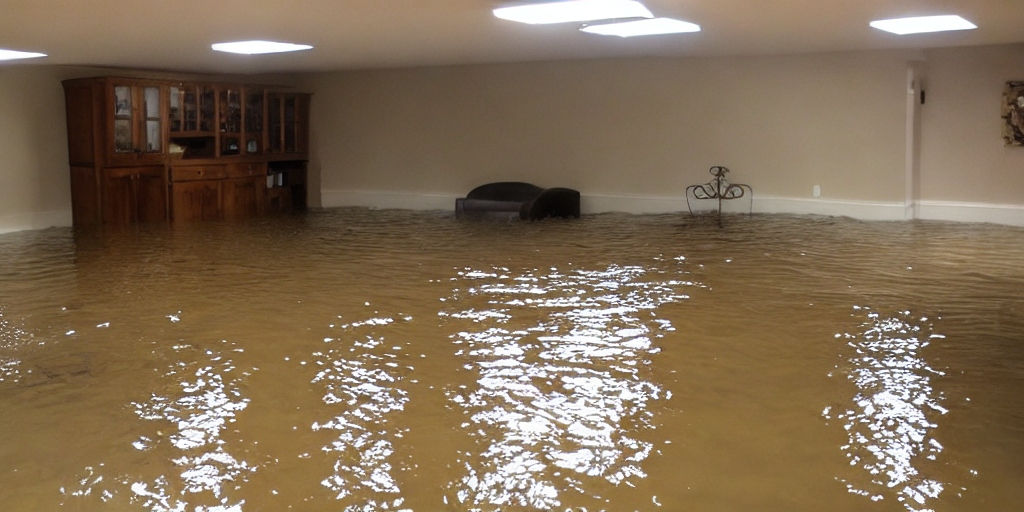Basement flooding can be a homeowner’s worst nightmare, causing significant damage to property and leading to costly repairs. Whether due to heavy rainfall, plumbing issues, or structural damage, dealing with a flooded basement requires prompt action to minimize the extent of the damage and restore the space to its pre-flood condition. In this comprehensive guide, we’ll delve into the primary causes of restoration basement flooding, effective solutions for remediation, associated costs, and essential steps to take when faced with this challenging situation.
Understanding the #1 Cause of Basement Flooding
One of the primary causes of restoration basement flooding is excess water accumulation around the foundation of the home. This can occur due to various factors, including:
- Poor Drainage: Inadequate drainage systems around the perimeter of the home can allow water to pool near the foundation, increasing the risk of basement flooding, especially during heavy rainfall.
- Sump Pump Failure: Sump pumps play a crucial role in removing excess water from the basement. However, when a sump pump fails or malfunctions, it can lead to water buildup and subsequent flooding.
- Cracks in Foundation: Cracks or gaps in the foundation walls or floor can provide pathways for water to seep into the basement, particularly during periods of heavy rain or melting snow.
Also Read: Restoration Basement Flooding: Understanding the Causes and Solutions
Fixing a Flooded Basement: Effective Solutions and Costs
When faced with a flooded basement, swift action is essential to mitigate damage and restore the space. Here are steps to fix a restoration basement flooding issue:
- Assess the Damage: Begin by assessing the extent of the flooding and identifying the source of the water intrusion. This will help determine the appropriate course of action.
- Remove Standing Water: Use pumps, wet-dry vacuums, or buckets to remove standing water from the basement. Ensure proper ventilation to aid in the drying process.
- Address Moisture and Mold: Thoroughly dry the affected area and use dehumidifiers to reduce moisture levels. Promptly address any mold growth to prevent further damage and health risks.
- Repair Structural Damage: Repair any structural damage to the basement, including cracks in the foundation or walls, damaged flooring, and compromised insulation.
- Prevent Future Flooding: Take preventive measures to safeguard against future basement flooding, such as installing a backup sump pump, improving drainage around the home, and sealing foundation cracks.
The costs associated with restoration basement flooding can vary depending on the extent of the damage, the size of the basement, and the chosen restoration methods. On average, homeowners can expect to pay between $1,500 and $10,000 for professional cleanup and restoration services, including water extraction, drying, mold remediation, and structural repairs.
Impact on Foundation and Structural Integrity

When a basement floods, it can have serious implications for the foundation and structural integrity of the home. Excess water can weaken the foundation, leading to cracks, shifts, and settlement issues over time. Additionally, prolonged exposure to moisture can compromise the structural components of the basement, such as walls, floors, and support beams, increasing the risk of collapse or instability.
Insurance Coverage and Basement Flooding
Many homeowners are left wondering, “My basement flooded, what will insurance cover?” While standard homeowners insurance policies typically cover water damage from sudden and accidental events, such as burst pipes or malfunctioning appliances, they often exclude coverage for restoration basement flooding caused by groundwater intrusion or sewer backups. However, it’s essential to review your policy carefully and consider purchasing additional coverage, such as flood insurance or sewer backup coverage, to protect against basement flooding-related losses.
Also Read: Restoration Basement Flooding: Understanding Causes, Costs, and Solutions
Conclusion
In conclusion, restoration basement flooding can pose significant challenges for homeowners, requiring prompt action and effective solutions to mitigate damage and restore the space. By understanding the primary causes of basement flooding, implementing preventive measures, and being prepared to address water intrusion promptly, homeowners can minimize the risk of costly damage and protect the structural integrity of their homes. Remember to consult with qualified professionals for assistance with cleanup, restoration, and preventive measures to ensure a safe and dry basement environment for years to come.










